If you were expecting some kind of sun sign nonsense, forget about it. This is real astrology for the real world, not some mystical mumbo-jumbo word salad. If it's real astrology for yourself that you want, you can get it by phone or in print. And if you need help deciphering the astrological glyphs in the graphics accompanying this article, see Astroglyphs: Astrological Symbols Guide. Please note: this forecast is expressed in terms of Universal Time (UT). Also please be aware that, while I never change a forecast once it's published, I do post errata to acknowledge typographical errors and the like.
Tomorrow, and tomorrow, and tomorrow,
Creeps in this petty pace from day to day
To the last syllable of recorded time.
-- Shakespeare, Macbeth
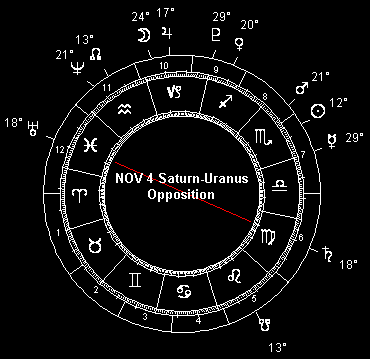 There are two major themes I see at work in March. One is the Jupiter-Saturn opposition, exact on the 28th, but within a few degrees from mid-March on into middle April a span extended by Mercury retrograding back into the configuration and Mars joining into it. (Speaking of the little planets retrograde, Mercurys Max phase begins this month on the 23rd and carries through until May 7 more about that later.) The other major theme is the SuperMoon full moon on the 19th. The closest full moon perigee of the year (at 356,577 km.), this will be a sight to see at sunset, when the hugely glorious full moon rises in the east.
There are two major themes I see at work in March. One is the Jupiter-Saturn opposition, exact on the 28th, but within a few degrees from mid-March on into middle April a span extended by Mercury retrograding back into the configuration and Mars joining into it. (Speaking of the little planets retrograde, Mercurys Max phase begins this month on the 23rd and carries through until May 7 more about that later.) The other major theme is the SuperMoon full moon on the 19th. The closest full moon perigee of the year (at 356,577 km.), this will be a sight to see at sunset, when the hugely glorious full moon rises in the east.
Of these two major cosmic factors, my sense is that the Jupiter-Saturn alignment will in the long run prove more significant. Ive gone into the context of this in great detail in past forecasts, most recently in last months which proved prophetic, if you read it word for word at the time. And if you didnt, here it is again:
As I write this, the peoples revolutions sweeping through the Middle East are the cable news networks latest excuse to hike their ad rates. (Im told they have contracts with their advertisers, stipulating that rates go up whenever theres a "Breaking News" banner in the broadcast.) Its only breaking news if you havent read my 2011 World Forecast Highlights (published last year):
Saturn-Uranus oppositions, for example, have heralded what Ive called a harbinger of "panic in the markets, panic in the streets, people in need of rescue, just a whiff of revolution in the air". Per my forecasts, these things have been much in evidence these past couple years, from strikes and riots in the streets of Athens, Paris, London, Port-au-Prince and Tehran to debt crises and wild swings in equity markets worldwide; into precious metals and away from threatened bonds and currencies; to the unemployment and foreclosure crises here in the States. This is still far from over, theres bound to be more public unrest on and off throughout 2011 . . .
The timing of this particular "whiff of revolution in the air" is no surprise either. It coincides with the long more about that in a moment Sun-Mars conjunction, one of a number of Mars factors described in my 2011 annual forecast - again, published last year - as indicating a rash of "fires, clashes, crashes and explosions . . . a disruption in the oil and natural gas supply chain - which in turn can shock the financial markets and set investors and institutions in a mad dash for the exits."
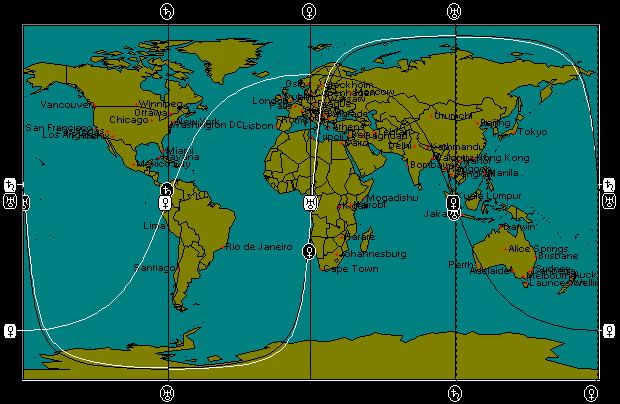 These uprisings of course express a noble and natural human yearning for self-determination. But theres a grimmer undertone thats unmistakable; namely, desperation the "people in need of rescue" Ive talked about for years now. It manifested on schedule per my forecast, and it has grown almost with each passing day. The current uprisings in the Middle East are due in no small part to governments cutting subsidies (for food and fuel) that they can ill afford, and their citizens can hardly afford to live without. This is the proverbial rock and a hard place.
These uprisings of course express a noble and natural human yearning for self-determination. But theres a grimmer undertone thats unmistakable; namely, desperation the "people in need of rescue" Ive talked about for years now. It manifested on schedule per my forecast, and it has grown almost with each passing day. The current uprisings in the Middle East are due in no small part to governments cutting subsidies (for food and fuel) that they can ill afford, and their citizens can hardly afford to live without. This is the proverbial rock and a hard place.
Looking back on that first Saturn-Uranus opposition of the 2008-2010 series, its clear in terms of astro-locality mapping that this whole "people in need of rescue" calamity had its roots in the US. The Saturn-Uranus opposition which heralded the collapse of the global financial situation was exact on November 4, 2008; and occurred with the opposition of these two planets in a T-Square configuration to Venus. Following the meridian lines for the opposition takes us right over Washington DC in the western world, and from the heart of China down through Indochina (pretty much right on Bangkok). Theres no more appropriate set of bookends for the economic quandary of the last several years than China and the US. (The Thai political crisis of 2008-2010 is an astro-locality footnote, in light of Bangkok falling right under the Saturn-Uranus opposition). Checking the map, its also clear that that the Venus meridian line for the T-Square grazed Tunisia which in 2011 would become the locus for the current Middle East peoples revolution movement. (What started in Tunisia spread to Egypt and Yemen, and now threatens Saudi Arabia, Jordan etc.)
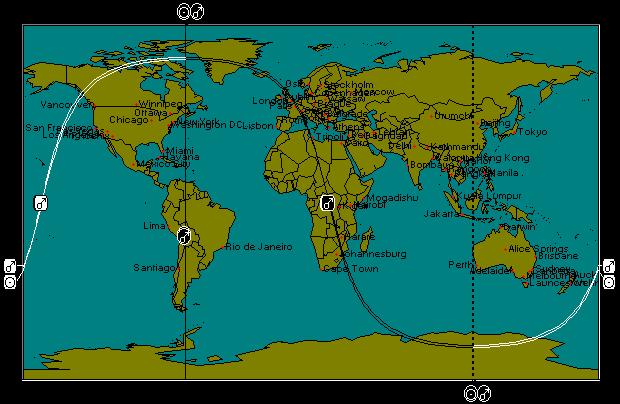 Tunisia is also tapped by the horizon line for the Sun-Mars conjunction in the astro-locality map for that event. The Sun and Mars are within just a few degrees of exact alignment for an unusually long time: from January 22 through the exact conjunction on February 4 and on through February 22nd. The current uprising hasnt even hit its stride yet, if this is any indication and the immediate crisis wont be over for weeks. Again, this comes as no surprise to anyone who read my 2011 World Forecast Highlights, where I wrote that "there are a number of Mars alignments in 2011 that up the ante for those if it bleeds, it leads headlines. These include the February 4 Sun-Mars conjunction (a poisonous substance figures into one of these headlines) . . ."
Tunisia is also tapped by the horizon line for the Sun-Mars conjunction in the astro-locality map for that event. The Sun and Mars are within just a few degrees of exact alignment for an unusually long time: from January 22 through the exact conjunction on February 4 and on through February 22nd. The current uprising hasnt even hit its stride yet, if this is any indication and the immediate crisis wont be over for weeks. Again, this comes as no surprise to anyone who read my 2011 World Forecast Highlights, where I wrote that "there are a number of Mars alignments in 2011 that up the ante for those if it bleeds, it leads headlines. These include the February 4 Sun-Mars conjunction (a poisonous substance figures into one of these headlines) . . ."
Those "people in need of rescue" in the Middle East are hardly alone. Aside from the usual suspects already mentioned (Greece, Haiti and Iran), dont forget that some of the other trouble spots are the supposedly "wealthy powers" of Europe, including France and the UK (also already mentioned). Dont forget another couple of global "powers" singled out by that first Saturn-Uranus opposition back in 2008; namely China and the US. If you dont think that both are just like the Third World dictatorships in keeping a lid on civil unrest through subsidies of one kind of another, think again. For example, think about the huge, growing and many times-extended US unemployment benefits; and the fact that a record 43 million Americans (roughly one in seven) are surviving on food stamps and never mind that the price of gasoline in the US is in fact subsidized by federal tax policy. (Chinas managed economy is also engineered to keep people from taking to the streets, through subsidies of various kinds.)
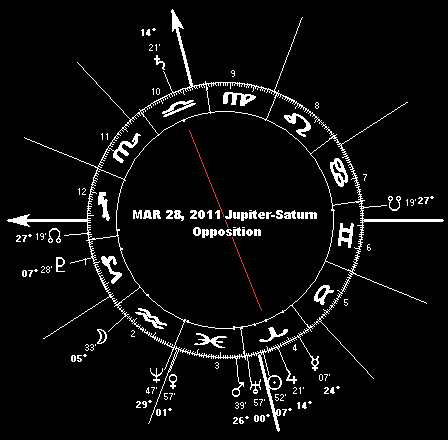 The long and the short of it is that the "whiff of revolution in the air" will not soon dissipate and will expand rather than contract during the January 22-February 22 Sun-Mars alignment, along with the other Red Planet signatures (fires, crashes, clashes, explosions and general mayhem). Where next? Look at the areas under the Sun-Mars lines in the astro-locality map. The Sun-Mars meridian line crosses due south through western Greenland and eastern Canada, and touches Puerto Rico and effectively grazes Hispaniola in the Caribbean (poor Haiti!); Venezuela, Brazil, Bolivia, Chile and Argentina in South America; and in the eastern hemisphere, China, Indonesia and western Australia fall under the Sun-Mars antimeridian. The Sun-Mars horizon line arcs northeasterly through the Pacific and over Hawaii, Alaska and northern Canada, before turning southeasterly to cross south-central Greenland, Iceland, and the UK, France and Italy in Europe; crossing the Mediterranean over Sardinia on a trek across Africa that runs through Tunisia and Libya, into the Indian Ocean (after touching Chad, the Central African Republic, DR Congo, Zambia, Zimbabwe and South Africa (close enough to count to Johannesburg).
The long and the short of it is that the "whiff of revolution in the air" will not soon dissipate and will expand rather than contract during the January 22-February 22 Sun-Mars alignment, along with the other Red Planet signatures (fires, crashes, clashes, explosions and general mayhem). Where next? Look at the areas under the Sun-Mars lines in the astro-locality map. The Sun-Mars meridian line crosses due south through western Greenland and eastern Canada, and touches Puerto Rico and effectively grazes Hispaniola in the Caribbean (poor Haiti!); Venezuela, Brazil, Bolivia, Chile and Argentina in South America; and in the eastern hemisphere, China, Indonesia and western Australia fall under the Sun-Mars antimeridian. The Sun-Mars horizon line arcs northeasterly through the Pacific and over Hawaii, Alaska and northern Canada, before turning southeasterly to cross south-central Greenland, Iceland, and the UK, France and Italy in Europe; crossing the Mediterranean over Sardinia on a trek across Africa that runs through Tunisia and Libya, into the Indian Ocean (after touching Chad, the Central African Republic, DR Congo, Zambia, Zimbabwe and South Africa (close enough to count to Johannesburg).
This is not to wax apocalyptic: commerce will go on, equities will resume their advances until the next big flap, the debt crisis associated with the March-April Jupiter-Saturn opposition. Whatever human disturbances are afoot during this long Sun-Mars conjunction, theyre bound to be impacted for better or worse by the storm and seismic potential associated with the February 3 new moon and the February 18 SuperMoon alignment. (Its hard to take to the barricades in the streets when theres a storm going on or in the aftermath of a devastating earthquake, for example.)
You saw it all last month, right down to the storm messing with the protests in Madison WI and the disruptions in the oil supply. And youve seen the commentators get in line too lately, pointing out how governments ending food and fuel subsidies helped trigger the recent round of revolutions. With the Jupiter-Saturn opposition in effect for most of this month and on into April, the next shoe is about to drop. No surprise there: you read about it in my 2010 World Forecast Highlights, published in 2009:
With pundits, governments and central banks telling us lately that a global economic recovery has begun, its comforting to believe that things are indeed getting better. They are. Dump trillions of dollars worth of cash into the global financial system, and theres bound to be an increase in economic activity for a while. All would be well, if that money were real; if it was a genuine store of value and a reliable medium of exchange. It is neither. Its not value at all. Its debt. Its all borrowed, and there comes a time when the line of credit gets cut off and the loans come due. The first but certainly not the last day of reckoning begins this year, under the aegis of the Jupiter-Saturn opposition component of the signature 2010 T-Square.
The 2010-2011 Jupiter-Saturn opposition is a typical "three-peat" alignment, due to retrogrades of first Saturn, then Jupiter and then Saturn again. Its the first Pisces-Virgo melding into Aries-Libra apparition of this opposition since the 1951-1952 triplet. Previous transitional triplets like this occurred in 1156-1157, 1097-1098 and 362-363 in the Common Era (CE), as well as 551-550 and 492-491 BCE (Before the Common Era). With only a half-dozen or so examples in 3,000 years, this particular transitional opposition of Jupiter and Saturn is fairly rare. But this barely scratches the surface when it comes to the significance of the current Jupiter-Saturn alignment: more on that in a moment.
The opposition morphs from an initial alignment in Pisces-Virgo (respectively) on May 23, 2010, to a pair in Aries-Libra (one on August 16, 2010, the other on March 28, 2011). All three alignments have a strong Mars component: the first occurs during the Mars Max cycle, the latter two have Mars at one end or the other of the opposition (conjunct Saturn in the first case, opposing the Ringed Planet in the second). The Red Planet factor means that governments and central banks dont have the luxury of working up solutions to economic and financial breakdowns at their leisure. Rather, theres anger and the threat of violence in the mix: from civil unrest to terrorism to international tension and conflict.
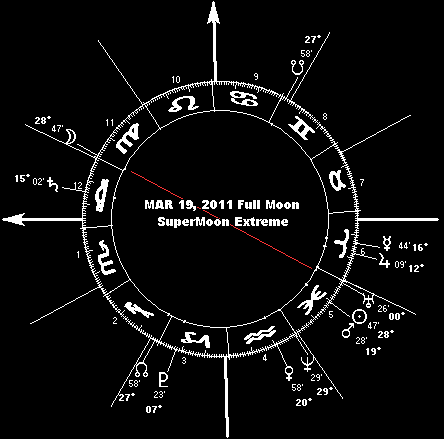 So get ready for the debt crises and the financial panics to raise their ugly heads again. The threat of a sovereign debt default in Europe or a bubble bursting in China can shake world markets as badly as a disruption in the oil and gas supply chain and we might even get them all at once. And if it happens between mid- March and mid-April, it will be right on schedule. If you see the euro go to $1.41 just before it all hits the fan, think about shorting it. Look for a chance to take profits on equities going into a Jupiter-Saturn opposition correction, and then buy them back at a discount when the dust clears and the bull rally resumes until sometime this summer, when the Venus Max momentum is spent and the next profit-taking scenario will probably arise. Be sure to have some cash on the sidelines, and look for discounted precious metals when fear sends investors dumping gold and silver to raise cash in the vain hope of buying safety in the form of US securities. And if you want to short treasuries, you know youll win in the long run . . . but fighting the Fed is not for the faint of heart or the slow of hand.
So get ready for the debt crises and the financial panics to raise their ugly heads again. The threat of a sovereign debt default in Europe or a bubble bursting in China can shake world markets as badly as a disruption in the oil and gas supply chain and we might even get them all at once. And if it happens between mid- March and mid-April, it will be right on schedule. If you see the euro go to $1.41 just before it all hits the fan, think about shorting it. Look for a chance to take profits on equities going into a Jupiter-Saturn opposition correction, and then buy them back at a discount when the dust clears and the bull rally resumes until sometime this summer, when the Venus Max momentum is spent and the next profit-taking scenario will probably arise. Be sure to have some cash on the sidelines, and look for discounted precious metals when fear sends investors dumping gold and silver to raise cash in the vain hope of buying safety in the form of US securities. And if you want to short treasuries, you know youll win in the long run . . . but fighting the Fed is not for the faint of heart or the slow of hand.
Markets, geopolitics and history aside, you cant get there from here if you dont get out of Mother Natures way. First and foremost, that means being mindful of the March 19 full moon 28° 48' Virgo. Its arguably the years most extreme SuperMoon, for a couple of reasons: its the closest SuperMoon of the year, occurring within an hour of lunar perigee (the Moons closest approach to Earth): the Moon will look huge when it rises at sunset. And being so close to the vernal equinox, this SuperMoon occurs within hours of the moment the full moon crosses the celestial equator from north to south, just as the Sun crosses in the opposite direction. That makes this a major geophysical stress window, centered on the actual alignment date but in effect from the 16th through the 22nd. Of course you can expect the usual: a surge in extreme tides along the coasts, a rash of moderate-to-severe seismic activity (including magnitude 5+ earthquakes, tsunami and volcanic eruptions), and most especially in this case a dramatic spike in powerful storms with heavy precipitation, damaging winds and extreme electrical activity. Floods are a big part of the picture in this case, although some of these will be dry electrical storms that spark fast-spreading wildfires.
Being planetary in scale, theres no place on our home planet thats beyond the range of a SuperMoon, so it wouldnt hurt to make ready wherever you are or plan to be during the March 16-22 SuperMoon risk window. That said, possible zones of special vulnerability may be indicated by astro-locality mapping this particular SuperMoon alignment. Among these are longitudinal meridian lines defining a swath of elevated risk running through North and Central America from Chicago at the eastern edge to Winnipeg and Mexico City on the west. This same longitudinal swath crosses the poles to sketch out a similar swath in Asia, through Siberia, eastern India, Bangladesh, Nepal, western China and Mongolia. In addition, horizon arcs sweep from New Zealand through the Pacific across to the Russian side of the Bering Strait, across Greenland and Iceland, and down through northern and western Europe and west Africa.
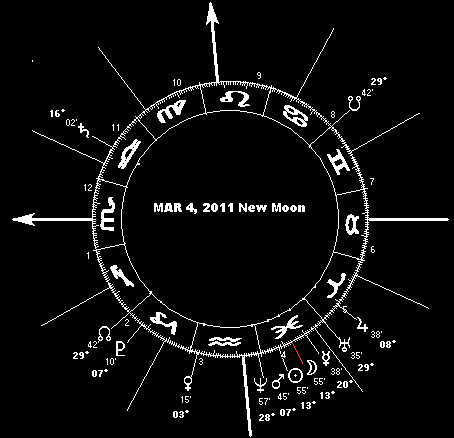 The March 19 SuperMoon is by far the most significant storm and seismic indicator this month, but its not the only one. Lesser geocosmic shock windows also up the ante for unusually strong storms and moderate to severe seismic activity (including magnitude 5+ earthquakes, subsequent tsunami, and volcanic eruptions). These lesser windows include March 1-7 (surrounding the new moon on the 4th), March 23-26 (bracketing the lunar south declination peak on the 25th), and from late on the 31st on into early April.
The March 19 SuperMoon is by far the most significant storm and seismic indicator this month, but its not the only one. Lesser geocosmic shock windows also up the ante for unusually strong storms and moderate to severe seismic activity (including magnitude 5+ earthquakes, subsequent tsunami, and volcanic eruptions). These lesser windows include March 1-7 (surrounding the new moon on the 4th), March 23-26 (bracketing the lunar south declination peak on the 25th), and from late on the 31st on into early April.
Also late in March comes the start of the next Mercury Max cycle. It begins with evening start Mercurys March 23 greatest elongation east of the Sun, initiating a Mercury Max cycle which includes the March 30-April 23 retrograde and the April 9 inferior conjunction, and concludes with morning star Mercurys May 7 western elongation maximum.
Being closest to the Sun, Mercury goes between Earth and Sun more than any other planet; several times a year in fact, including the infamous Mercury retrogrades of astrological legend. While most astrologers pay a fair amount of attention to Mercury's retrograde, few realize that it's only a part of the more fundamental intersolar phase in the orbital interaction between Mercury and Earth, as they both orbit around the Sun.
The Mercury Max phase begins when the little Sun-grazer reaches its maximum elongation east of the Sun - its evening star phase. This happens when Mercury has come 'round to the same side of the Sun as Planet Earth, and is relatively near us. The little planet is then pulling up to pass Earth on the inside track, as it were; catching up to us from behind and then passing between us and the Sun. Just as it catches up with us, Mercury passes directly between Earth and the Sun. This is Mercury's inferior conjunction with the Sun. After the inferior conjunction, Mercury continues pulling ahead of us until it reaches its greatest elongation west of the Sun (its morning star phase), at which point the little planet is headed toward the far side of our parent star. Between these two extremes, the greatest east and west elongations, comes the fabled Mercury retrograde period of astrological lore.
Its worth noting that with the inferior planets (those inside Earths orbit; namely Mercury and Venus), the closest approach to Earth coincides with the inferior (retrograde) conjunction with the Sun. With the superior planets (those outside Earths orbit), the closest approach to Earth coincides with the planets (retrograde) solar opposition. Clearly astrological doctrine regarding planetary retrogrades is completely unthinking. Rather than being weakened or debilitated in some way, a retrograde planet is in fact bigger and brighter in our sky, and closer to our home planet. Not unlike a SuperMoon, in that respect . . .
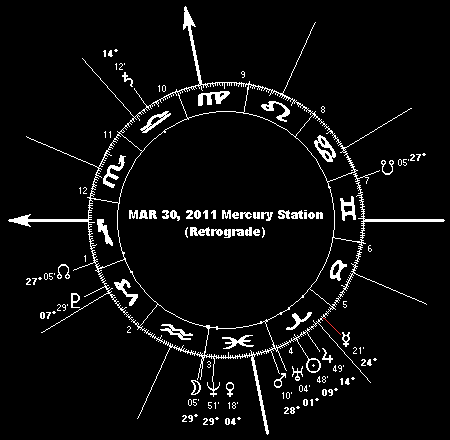 Accordingly, Mercury Max is a peak Mercury experience, with the little planet shining brighter than usual as the evening star at the beginning of the intersolar phase. And then it gets really strange, when Mercurys apparent motion through our sky slows, then comes to a standstill, and then reverses direction the dreaded Mercury retrograde. After a few weeks, the reverse motion slows and stops, and then the little planet resumes its normal course of motion through our sky. Mercury remains brighter than usual following the end of its retrograde cycle, until it reaches maximum elongation west of the Sun (Mercurys morning star phase) and then passes behind the solar plane as seen from Earth.
Accordingly, Mercury Max is a peak Mercury experience, with the little planet shining brighter than usual as the evening star at the beginning of the intersolar phase. And then it gets really strange, when Mercurys apparent motion through our sky slows, then comes to a standstill, and then reverses direction the dreaded Mercury retrograde. After a few weeks, the reverse motion slows and stops, and then the little planet resumes its normal course of motion through our sky. Mercury remains brighter than usual following the end of its retrograde cycle, until it reaches maximum elongation west of the Sun (Mercurys morning star phase) and then passes behind the solar plane as seen from Earth.
What I have termed the Mercury Max cycle is a way of putting the Earth-Sun-Mercury relationship into a perspective that reflects real-sky, observational astronomy; the dynamics of our solar system as seen from our home planet perch. Look up in the sky over the indicated period and on the specified dates listed below, and you will see the phenomena described above. This perspective replaces the stilted, removed-from-reality practice of looking not at the sky, but at an ephemeris: first to see when Mercury comes to the degree at which it will later makes its direct station, and second when it reaches the degree at which it will later make its retrograde station; and then referring to the overlap between these two dates and the lesser included Mercury retrograde dates as the "shadow period" of the retrograde.
For example, the shadow period for the March 30-April 23, 2011 Mercury retrograde would begin on March 17 (the day Mercury reaches the degree at which it goes direct on April 23) and end on May 11 (the day Mercury returns to the degree at which it went retrograde on March 30). But in terms of any organic, visible manifestation in the skies of our home planet, these ephemeris-derived dates have no relevance to the Earth-Sun-Mercury dynamic. Its like left-brain versus right-brain thinking, linear versus holistic. One is a made-up abstraction looked up in a book, the other a reality that can be seen in the sky. The corresponding organically derived dates are March 23 (greatest eastern elongation) and May 7 (western elongation maximum). Occasionally the real Mercury Max beginning and ending dates will coincide with the artificial so-called shadow period start and stop dates. Even a broken clock is right twice a day. But the reality is there to see in the sky.
 Retrograde means moving backwards. This is what Mercury appears to do in our skies when the little inner planet catches up on us and passes us on the inside, between Earth and the Sun. First Mercury reaches its greatest eastern elongation, then it appears to stand still in the sky (the retrograde station), and then it appears to move backwards through the heavens for a period of several weeks: that's Mercury retrograde for you. It ends when the little Sun-grazer's backwards motion comes to an apparent halt (the direct station); after which, Mercury moves forward again, until it reaches its maximum elongation west of the Sun. The reality of course is that Mercury never stops in its orbit, and never moves backward: this is only how the relative motions of Earth and Mercury around the Sun cause Mercury to move through our night sky. (See the animation of Mercurys synodic cycle to get the picture.)
Retrograde means moving backwards. This is what Mercury appears to do in our skies when the little inner planet catches up on us and passes us on the inside, between Earth and the Sun. First Mercury reaches its greatest eastern elongation, then it appears to stand still in the sky (the retrograde station), and then it appears to move backwards through the heavens for a period of several weeks: that's Mercury retrograde for you. It ends when the little Sun-grazer's backwards motion comes to an apparent halt (the direct station); after which, Mercury moves forward again, until it reaches its maximum elongation west of the Sun. The reality of course is that Mercury never stops in its orbit, and never moves backward: this is only how the relative motions of Earth and Mercury around the Sun cause Mercury to move through our night sky. (See the animation of Mercurys synodic cycle to get the picture.)
Among the sort of things to be ready for during the above mentioned Mercury intersolar cycles: strikes and other disruptions affecting transportation and communication (e.g. postal, phone, mass transit, trucking, airline, shipping, dock and warehouse workers, teachers and all manner of media). Weather both terrestrial and solar (including geomagnetic storms) can play a part in the kind of breakdowns described here, but human effort (and sometimes malicious action) is a part of the mix as well. Power failures due to infrastructure breakdown and computer network disruptions caused by hacker attacks, software vulnerabilities and the like are also just a crossed wire or a keystroke away from a major mess at these times.
If I had to pick a day to have a backup generator all fueled up and ready to go, a contingency plan in place in case the scheduled or expected didn't come to pass, a day to be especially sharp and steady and focused - it would be during one of these Mercury cycles. Note these dates; be ready with a fallback plan just in case. It's not so much that disaster is destined to strike when Mercury is in its intersolar phase. Rather, it's that everything pertaining to Mercury becomes crucial; and unless it's treated as such, then it goes awry. More and more, we live in a "just in time" world - and if the slightest delay holds up just one single thing, then a whole process screeches to a halt. Unfortunately, few people keep their eye on the ball with any consistency and diligence. And that's the reason these Mercury cycles tend to turn into Murphy's Law festivals. Practically speaking, this means that having a "just in time" inventory of essentials is risky business at times like this. Don't say I didn't warn you!
In closing, here are a few odds and ends worth noting in March. One is the April 3 Mars-Uranus alignment, which will manifest starting the last few days of March as these two planets pull to within a few degrees of exact conjunction: fiery tempers, fiery crashes, explosive conflicts and, well, explosions. A good time to keep your guard up. And be aware of the Venus-Neptune alignment within a few degrees of exact throughout the last week of March. Itll be even more invisible that the Mars-Uranus conjunction, since neither Uranus nor Neptune is your typical naked eye planet. (Uranus, sometimes Neptune, never.) This is bound to be a dreamy time maybe illusory, maybe beautiful, maybe deluded. Get a grip, or take your chances going with the flow, Lotus Eater. And watch for the Mercury-Jupiter conjunction in the western sky after sunset around the 15th: a sight to inspire bold schemes and all manner of derring-do, for sure.
 SPECIAL FEATURE: This month's birthdays of the famous and infamous (with astrological birth charts)
SPECIAL FEATURE: This month's birthdays of the famous and infamous (with astrological birth charts)